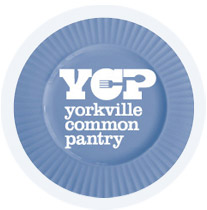While Amy is out on maternity leave (getting to know her own future TILE member), we’ve invited a few fabulous friends to keep up the dialogue. Anna Lappé is an author and public speaker focused on sustainable food issues. Along with her mother, Frances Moore Lappé (Diet for a Small Planet), Anna founded the Small Planet Institute, the Small Planet Fund, and Small Planet Media – all devoted to empowering people to make informed decisions about the things that affect their world.
Her most recent book, Diet for a Hot Planet, explores the relationship between the ways we choose to eat and… basically the future of humanity on planet Earth. Here are some of her tips for staying in control of your options when you’re out and about:
You’re the boss when it comes to spending your money, right? So why does it sometimes seem like you’re stuck paying for something you don’t really want? Or even something you wish weren’t for sale in the first place? For example, you’ve probably dropped plenty of cash on “travel” food you would never touch if there were something better available. (Hello, fast food chains, candy bars, and “in-flight snacks.” We won’t even mention Newark Airport’s own “Dick Clark’s American Bandstand Grill.”) So how can you take control?
I traveled from Brooklyn to DC recently in the middle of “Eat In Week” – a week in which I challenged myself to stick to preparing my own whole, healthy meals at home. I braved a blizzard at La Guardia and a guy in a suit in 6F throwing up. (Thankfully, he went for one of those paper bags in the seat pocket you always wonder if anybody actually uses.) I knew this trip would fall in the middle of Eat In Week, but I had planned to pack myself off with meals to carry me through at least one day. Setting up my seven-month-old with her babysitter and getting out of the house proved a bit preoccupying, though.
As a result, I remembered a few basic principles of “sort-of eating in” on the road. To make it work I decided I would eat out… but only those things that I could make at home. That meant cutting out all processed foods and most of what you find in airports. It also meant planning ahead. So the first night, before ducking into the Metro to head back to my hotel, I spied a café with handmade sandwiches and just-made soups and salads… and dove in. A half-hour later, popping up somewhere in Maryland, I was glad I had. The only so-called food options out there were golden arches and a strip mall’s Chinese takeout.
Spending money on real food when you’re on the road is tough, but not impossible. Here are some tips for eating well when you travel:
1. Bring your own gear: Grist’s Umbra has a great video on the benefits and sourcing of cool to-go food gear. When traveling, I always try to remember to grab my coffee mug and bring my own tea bags – especially nice for late nights in hotel rooms when you’ve got a coffee maker and not much else.
2. Make your own to-go snacks: I love to bring along nuts and dried fruit: cashews and dried cranberries, almonds and raisins. Your own personalized trail mix is always a great snack in a pinch.
3. Keep your eyes peeled: When you see good food, go for it. You never know when you’ll find it again.
4. Tap online resources before you go: Use the Eat Well Guide to find farmers market hours, stores with great food options, and restaurants carrying sustainably raised and locally grown foods.
5. Ask the locals: Peep up on Twitter, check out Chowhound, see what the Slow Food USA chapters have to say. Even if you don’t know any locals where you’re headed, you can ask informed sustainable food devotees. You’ll be glad you did.
- Anna
Anna graduated with honors from Brown University and earned an M.A. in Economic and Political Development from Columbia University. Her other books include Hope’s Edge: The Next Diet for a Small Planet and Grub: Ideas for an Urban Organic Kitchen. Anna is currently a Senior Fellow with the Oakland Institute and is one of the first Innovators of The Glynwood Institute for Sustainable Food and Farming.


